After exerting a little extra effort on the assembly end, you can reap myriad benefits from a raised bed garden, the foremost being easy maintenance. Read on for an explanation of what is a raised bed garden, as well as tips and ideas for building and planting your own.
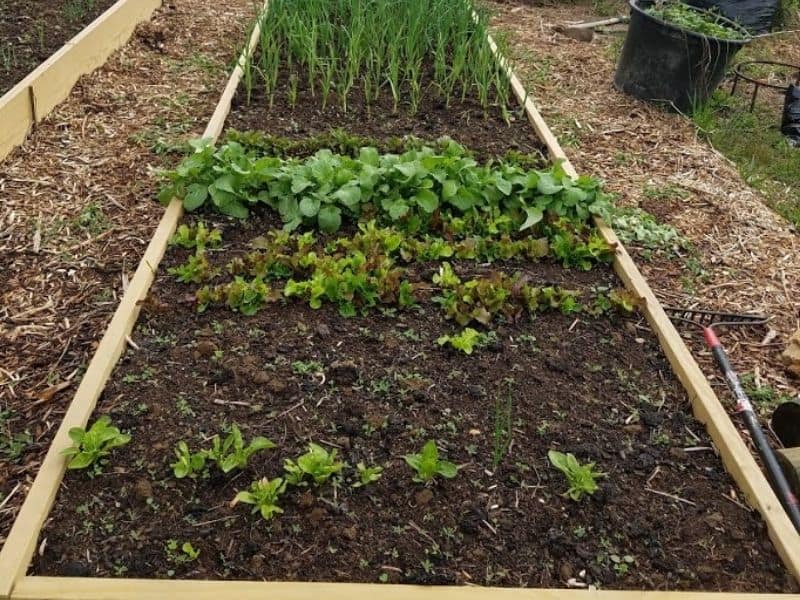
What Is A Raised Bed Garden?
A raised bed garden consists of large, freestanding frames or boxes built above the natural terrain. Although they tend to be rectangular, raised beds can also be round, square, triangular, or really any shape the builder desires.
Options for frame materials are also seemingly endless: wood, plastic, composite lumber, brick, or even recycled materials like old tires. Depending on your needs and desires, you can either design and build your own raised bed garden or purchase a kit.
Advantages of raised bed gardening
- Due to their height, raised beds reduce the need for bending and kneeling, saving your joints and back from pain and discomfort.
- Adding soil to the frame means you have control over the texture and nutrient contents of the soil. This enables gardening in areas with rocky, nutrient-poor, or compacted soils.
- The elevation and control over the soil also improve drainage.
- Raised beds tend to warm up earlier in the spring, allowing for earlier planting times.
- Raised bed gardens tend to experience fewer weeds, and adding ground cloth or other material at the bottom enhances this benefit.
- Finally, raised beds can be installed almost anywhere, making them perfect for small-space gardening.
How to build a raised garden bed
Building your own raised garden bed can be as simple or complex as you make it.
First, choose a location. The ideal place will be on level ground with full sun unless the plants you want to grow are shade tolerant.
Then there are four main components to consider: dimensions, frame material, bottom material, and soil. Although raised beds can be made out of a variety of materials, as mentioned above, here we’ll focus on a classic wooden frame.
What is the best height for a raised garden bed?
The height of your raised garden bed will depend on which plants you want to grow and how much kneeling and bending you want to do. At a minimum, the soil depth should be eight inches to accommodate the roots of most garden plants, though twelve is ideal, especially if you plan on growing root crops.
And although length doesn’t matter as much, make sure the width allows you to easily reach the center of the bed from both sides. Four feet is typical, though smaller individuals and families wanting children to get involved might want to consider a three-foot width.
What is the best wood to use for a raised garden bed?
Although many different types of wood can be used to build a raised garden bed, cedar is probably the best. It’s lightweight, easy to work with, and best of all, resistant to decay. A cedar raised bed frame can last for up to ten years.
Alternatively, reclaimed redwood is also rot-resistant and has a similar lifespan to cedar. Whatever type of wood you go with, choose thicker, two-inch boards for greater stability and durability. Avoid railroad ties and treated lumber, which can leach chemicals into your soil.
What do I put at the bottom of a raised garden bed?
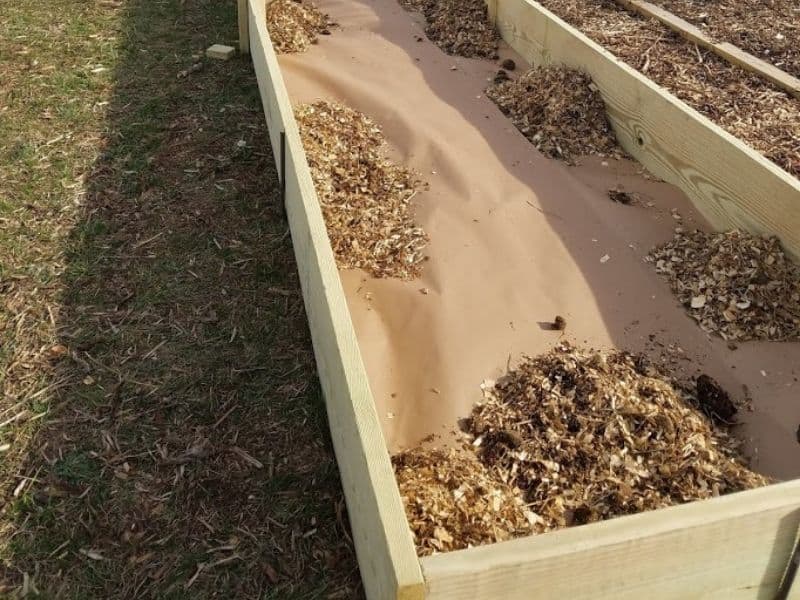
You don’t actually need to put anything at the bottom of a raised garden bed, but doing so can help suppress weeds and keep tunneling creatures like moles and voles out. The cheapest and possibly best options are cardboard and newspaper. These will help kill any weeds present in your garden site but will eventually break down to allow earthworms and other beneficial organisms to enter the bed and help keep the soil healthy.
Landscape fabric is also an excellent weed suppressant, and while it does provide good drainage, you will need to introduce earthworms to the soil since they can’t enter from the bottom.
Plastic is not recommended since it doesn’t allow drainage unless the existing soil contains toxins, and you need a barrier between it and your raised bed soil. If tunneling critters are a problem, or even a potential problem, lay down gopher wire or wide-mesh hardware cloth.
What is the best soil for raised garden beds?
To make a simple, all-purpose soil mixture for raised garden beds, combine one part topsoil with one part compost. You can also add as much as one-third to one-half coconut coir to help aerate the soil and improve moisture and nutrient retention, though this is not required. Organic amendments such as worm castings are also great additions.
What grows well in raised beds?
As a general rule, smaller plants with shallower roots grow best in raised beds, though if your bed is deeper, you can of course grow plants with longer roots, like carrots, which will thrive in the loose soil.
Large plants like corn and winter squash can be grown in bigger raised beds, but keep in mind that they take up a lot of space. Use interplanting methods like three sisters gardening (corn, beans, and squash) or grow vines on a trellis for greater efficiency.
Best vegetables to grow in a raised garden
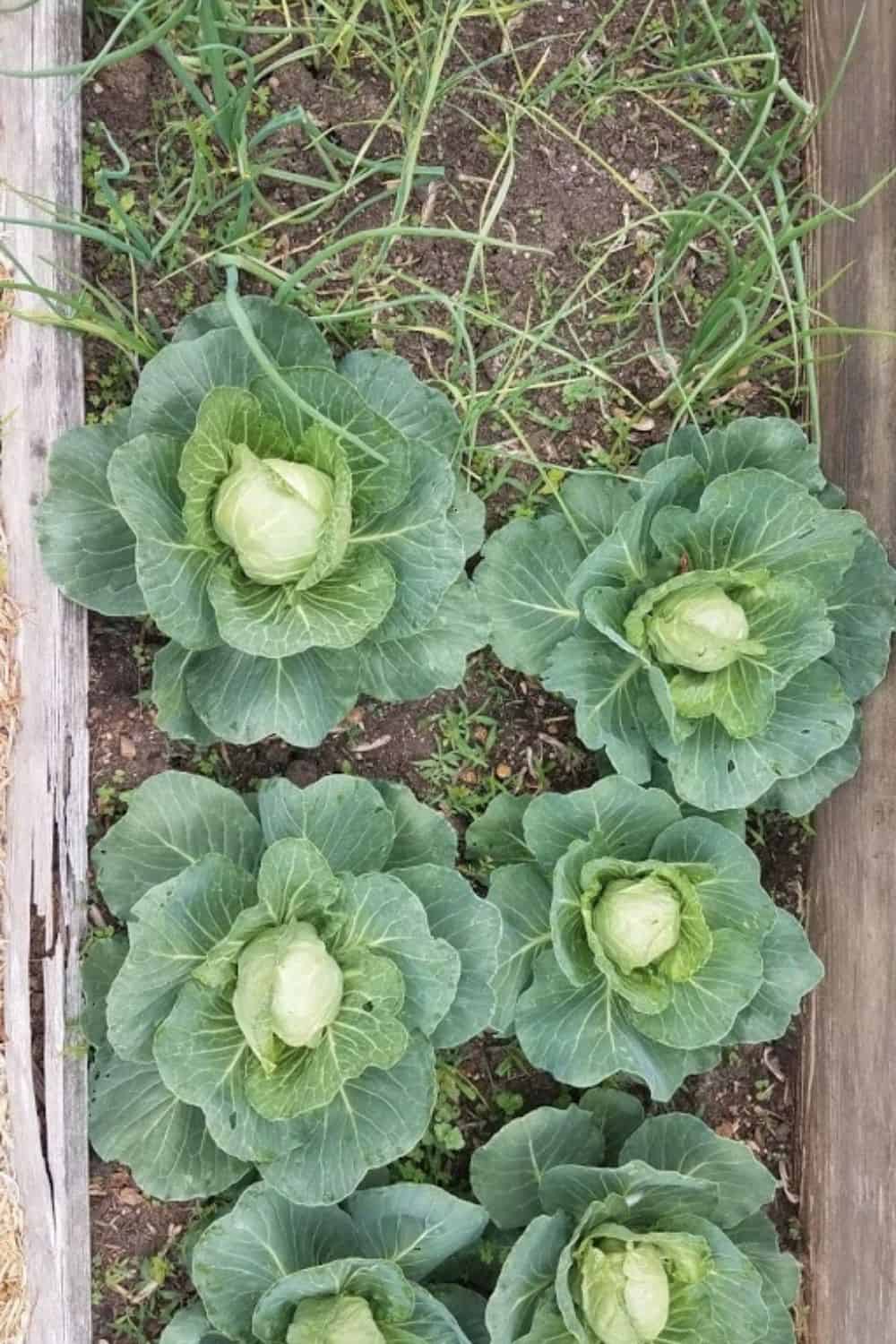
Because the soil in a raised bed warms up earlier in the spring, you can get a head start on vegetable gardening, especially if you have a cover to put on the bed. Greens like lettuce, arugula, spinach, and baby kale tend to do well in raised garden beds since they don’t take up much space. Choose determinate tomato varieties, which only grow to a certain height, and dwarf varieties of other larger vegetables. Other options include
- green onions
- radishes
- zucchini
- cucumbers
- pole beans
- peppers
What herbs grow well in a raised bed
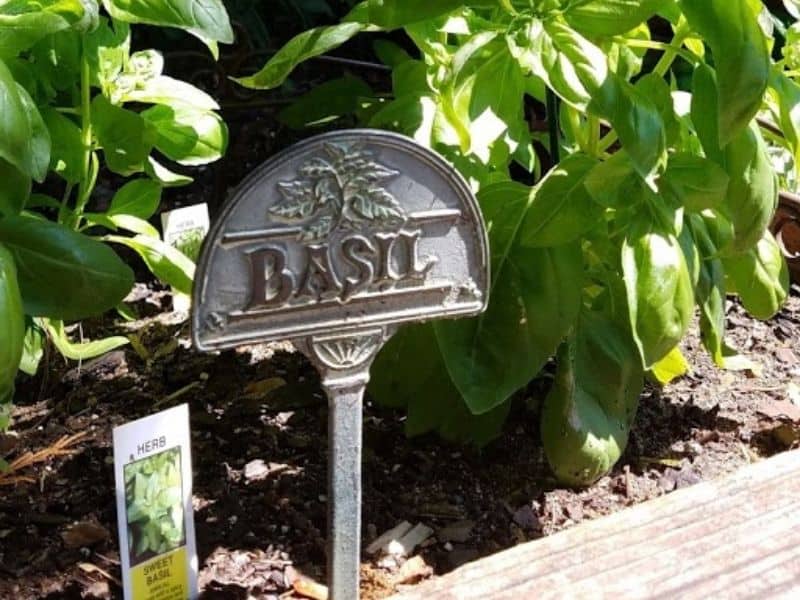
Raised bed gardens are excellent places to grow herbs. As with vegetables, choose smaller varieties where possible, but otherwise, almost any herb can be grown in a raised bed. Consider dedicating one small bed to spreading herbs like mint and lemon balm, which will be better contained in a raised bed than an in-ground garden. Here are some other favorites:
- parsley
- basil
- thyme
- rosemary
- sage
- oregano
Where to buy a raised garden bed
If DIY isn’t your style, you can buy a raised bed garden kit to simplify the setup process. Check your local nursery, garden center, or hardware store for raised bed kits, or visit a big box store or websites like Lowe’s, Home Depot, or Gardner’s Supply Company for more options. These kits range from minimal assembly required to hardware only, which allow you to choose your own lumber and assemble it with conveniently supplied supports and screws.
Of course, Amazon has many tyupes of raised beds for gardening.
Raised Bed Garden Design Ideas
There are many different types of raised bed gardens! Here are a few design ideas to help you decide what might work best for your gardening needs.
DIY wooden raised bed
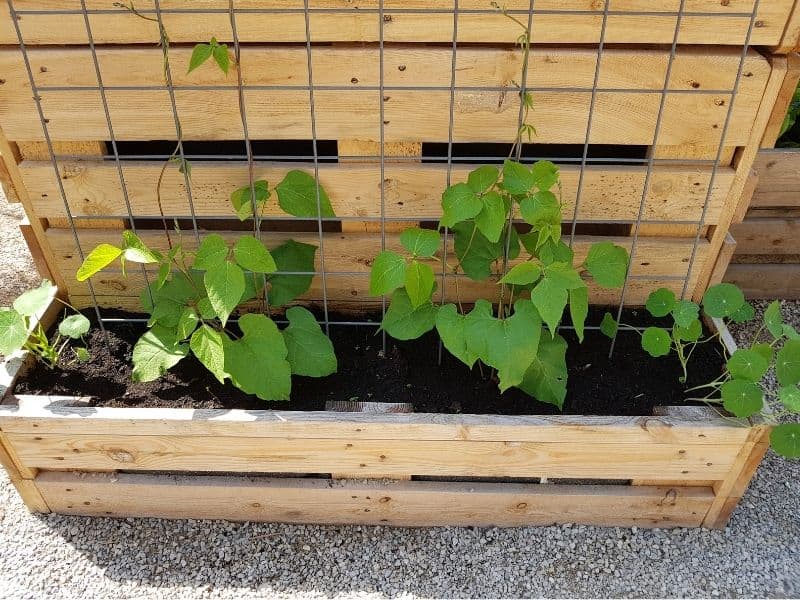
For a true space saver, grow vertically by building a narrow raised bed with a trellis. Start from scratch with purchased lumber, or use wooden pallets for a cheaper option: just make sure they have “HT” stamped somewhere on them, signifying they were heat-treated rather than chemically treated.
Pole beans, cucumbers, peas, and even squash and melons can be grown on a trellis. This is also an excellent setup for flowering vines, which can add a lot of color to a small space.
Elevated raised bed
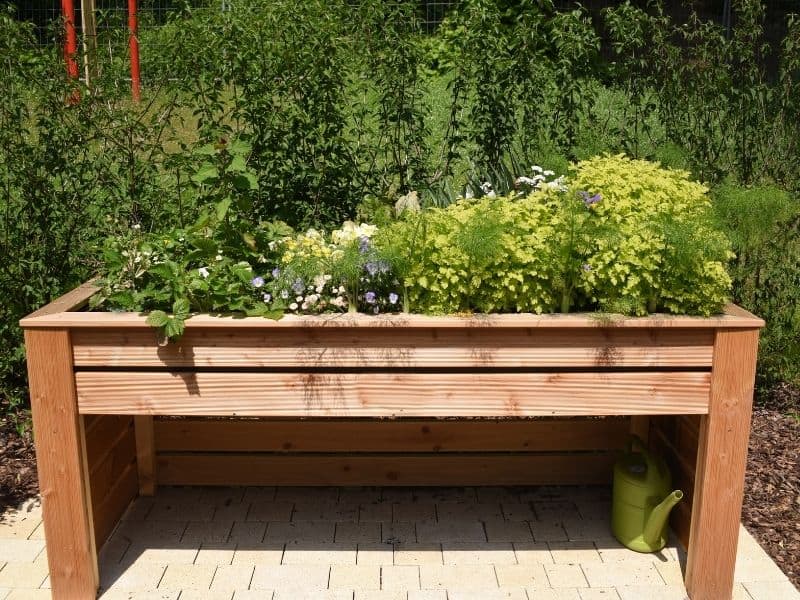
Elevated raised beds, which often resemble a table, are the best option for preventing back and joint pain by holding the plants at about waist height. As an added bonus, the space underneath can be used to store gardening tools.
Place one near the back door and fill it with kitchen herbs for easy access. Choose shorter plants that will be easier to reach and less susceptible to wind damage, and consider trailing plants that can tumble over the sides for an especially lush appearance.
Crate raised bed
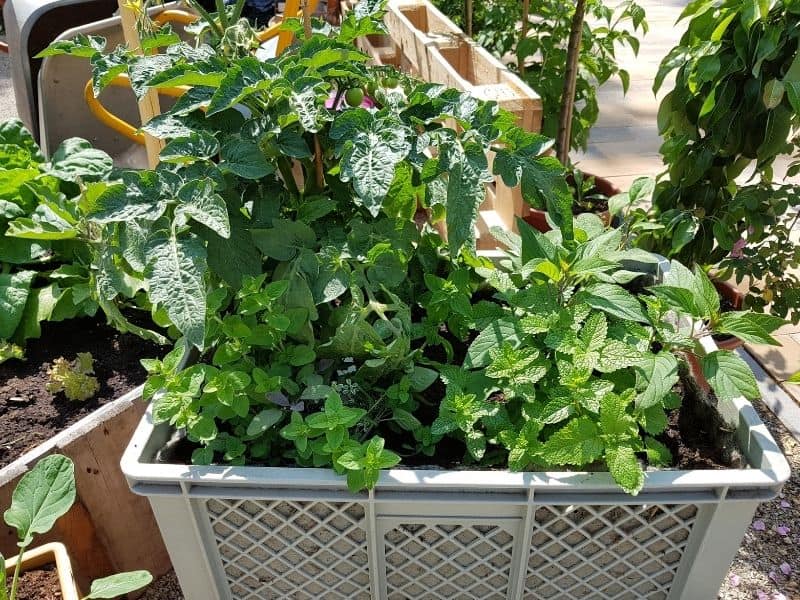
Patio gardeners and those on a budget may want to consider using plastic crates for raised bed gardening. Milk crates can often be found for free or cheap. Line them with burlap or perforated plastic to help hold in the soil, or simply place cardboard in the bottom and plant strawberries or small herbs in the holes in the sides.
Larger plants like tomatoes should each have their own crate, but smaller plants like salad greens can be planted together.
Tall raised bed
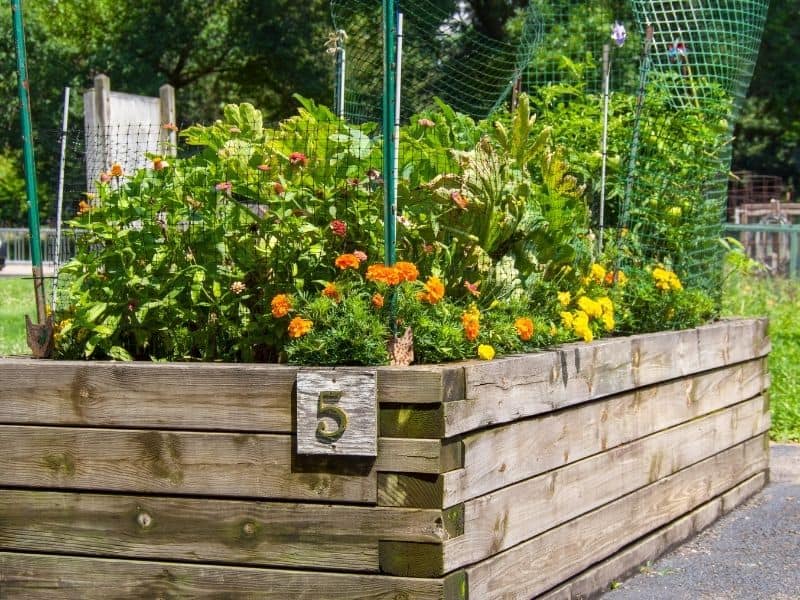
Like the elevated raised bed, a tall raised bed eliminates the need for kneeling. These can be larger and sturdier, though, and hold a wider variety of plants, including those with long taproots, like carrots. The tall sides also help keep small animals out, and an added fence will prevent deer browsing.
Round brick raised flower bed
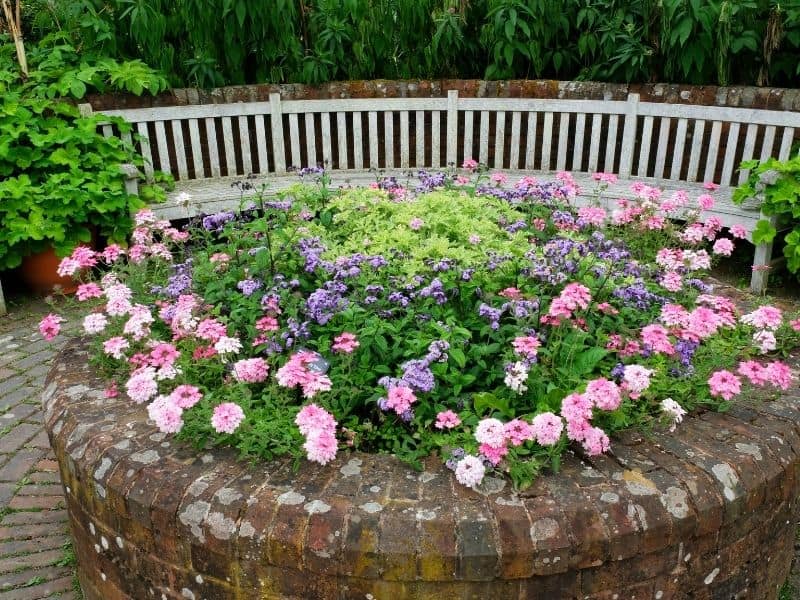
Raised beds don’t have to be rectangular! A round raised flower bed made of brick or stone makes for an attractive centerpiece on a patio or in a raised bed garden. Fill it with perennials for a beautiful, low-maintenance flower bed or place a taller perennial in the center and surround it with annuals each spring.
Use only upright plants for a neater look, or plant a few trailing plants like nasturtiums or creeping zinnias around the edges and allow them to spill over the sides.
Square raised flower beds made of wood
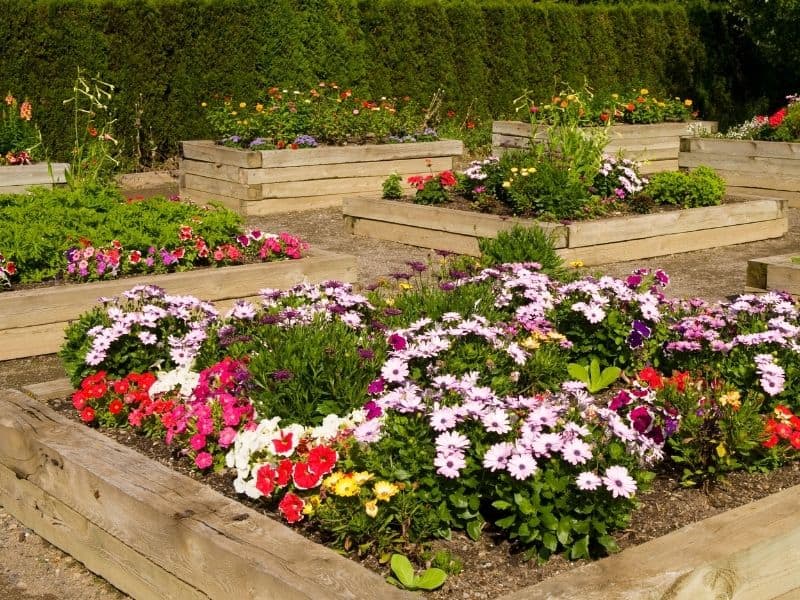
One of the most common raised bed designs is a low rectangle with a wood frame. Use squares instead for greater symmetry, or place one square at the center and surround it with rectangles or other shapes. As with the rectangle design, make sure you can still reach the center of the bed from the sides: —four feet is usually a good maximum width.
Hoop house raised bed
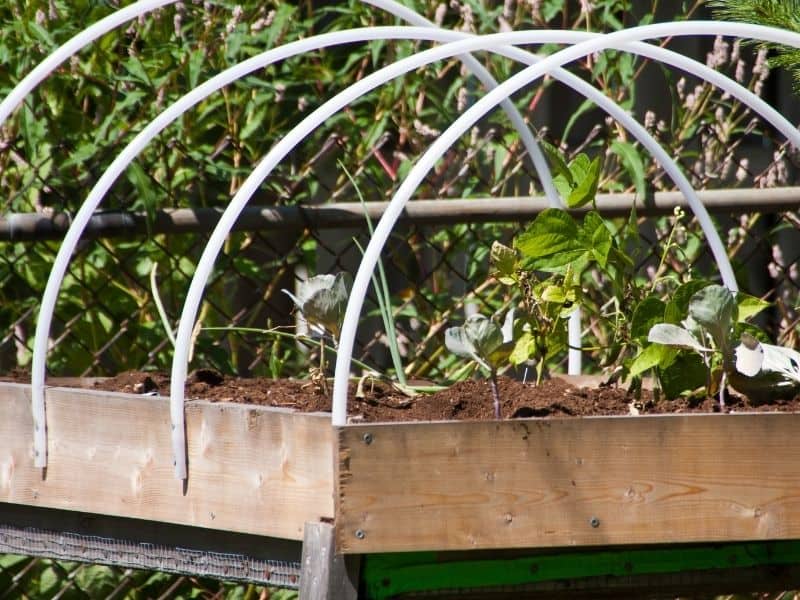
Raised beds already lengthen the growing season a bit by warming up sooner than the surrounding ground in the spring, but you can further this by adding a removable cover.
Some raised bed kits come with an optional cover, but if you’re building your own raised bed, you can turn it into a convertible mini hoop house by attaching hoops to the sides and covering them with plastic when frost threatens.
A Solexx greenhouse covering works well for raised beds too.
Recycled wood logs raised garden bed
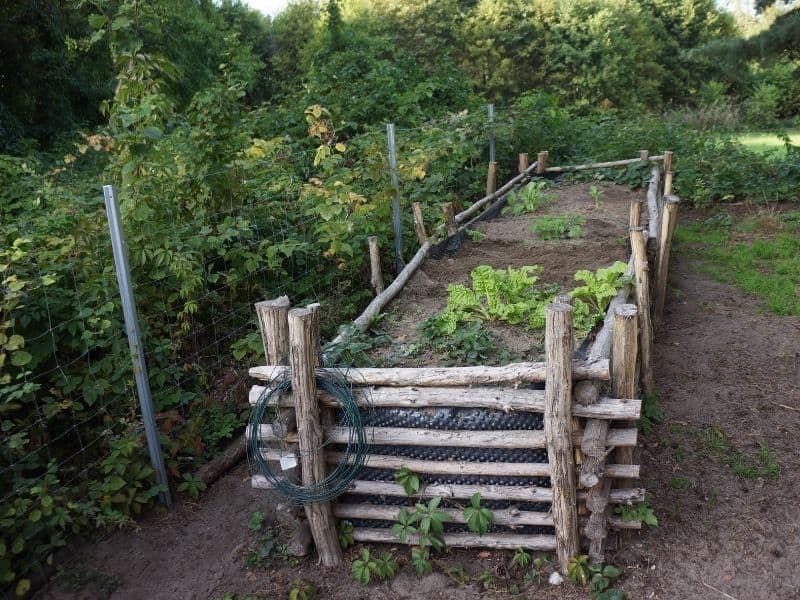
For a rustic look in your raised bed garden, build the frame out of repurposed logs. This can be as simple as placing logs around the border of a shallow bed or as complex as stacking the logs for a tall raised bed. For the latter option, if there is a significant amount of space between each log, you may need to line the bed with landscape fabric or hardware cloth before adding soil.
Square foot raised bed with herbs
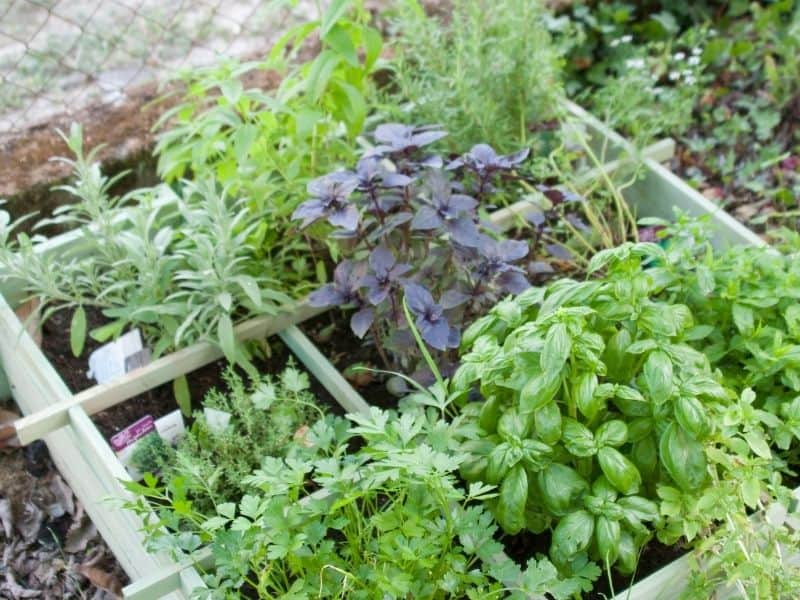
Raised bed gardens are perfect for square foot gardening, a method that enables growing more plants in less space by dividing the bed into square feet. Although this is most often used with vegetables, square foot gardening also works great for herbs. Use thin strips of wood to divide the raised bed into a visible grid of one-foot spaces for a cleaner look and more even plant spacing.
Spiral herb garden
An herb spiral is an attractive way to grow a variety of plants that have differing requirements. Use stone, bricks, or pavers for the edges, and orient the lowest end toward the north, if possible. The center, being the highest point of the spiral, is warm, dry, and sunny, whereas the bottom is cool, moist, and shady.
Plant Mediterranean herbs like lavender, thyme, rosemary, and oregano toward the top; herbs like parsley and chives that like cooler, moist conditions at the bottom; and anything in-between, like coriander and hyssop, in the middle.
FAQs about raised bed gardens
What is the purpose of a raised garden bed?
Raised garden beds have many purposes, though they’re typically used in small spaces, in areas with poor soil quality (or no soil at all), and to elevate the garden for easier access. They also tend to be lower maintenance, with fewer weeds and animal pest problems.
How do you water a raised bed?
If you only have one raised bed, such as an elevated raised bed or herb spiral, a large watering can will likely be sufficient. For multiple beds, though, you will at least want to use a hose.
The most convenient option for raised bed gardens is a simple irrigation system of drip tape or soaker hoses, which allows you to perform other gardening tasks while it waters the plants.
Depending on the type of plants in your raised beds, they may only need watering two to three times per week. Weather also plays a part: in hotter, drier conditions, the garden will need water more frequently, whereas rainy weather may keep your garden sufficiently moist. Pay attention to what your plants tell you; they’ll show signs of stress if they receive too little or too much water.
How big should a raised bed be?
A raised bed should be a minimum of eight inches deep to accommodate roots and a maximum of four feet wide for easy access of plants in the middle of the bed. The length depends entirely on your needs and preferences and the amount of space available: just keep in mind that you’ll have to walk around it, and some materials may bow outward if not properly supported.
Are there any disadvantages to raised bed gardening?
While raised bed gardening has many advantages, there are still a few disadvantages to consider. First, putting in raised beds can be rather expensive, from materials for the frame to the soil that fills it. The soil can also dry out quickly and may require extra amending and even the addition of earthworms if it isn’t open to the natural soil beneath. And although raised beds tend to require less maintenance overall, the frame materials will likely need replacing at some point.
Despite these disadvantages, there are still plenty of reasons to install raised beds, and you may find that these positive factors outweigh the costs. Whether you have limited space, mobility, or time, raised beds can make gardening more feasible and enjoyable.
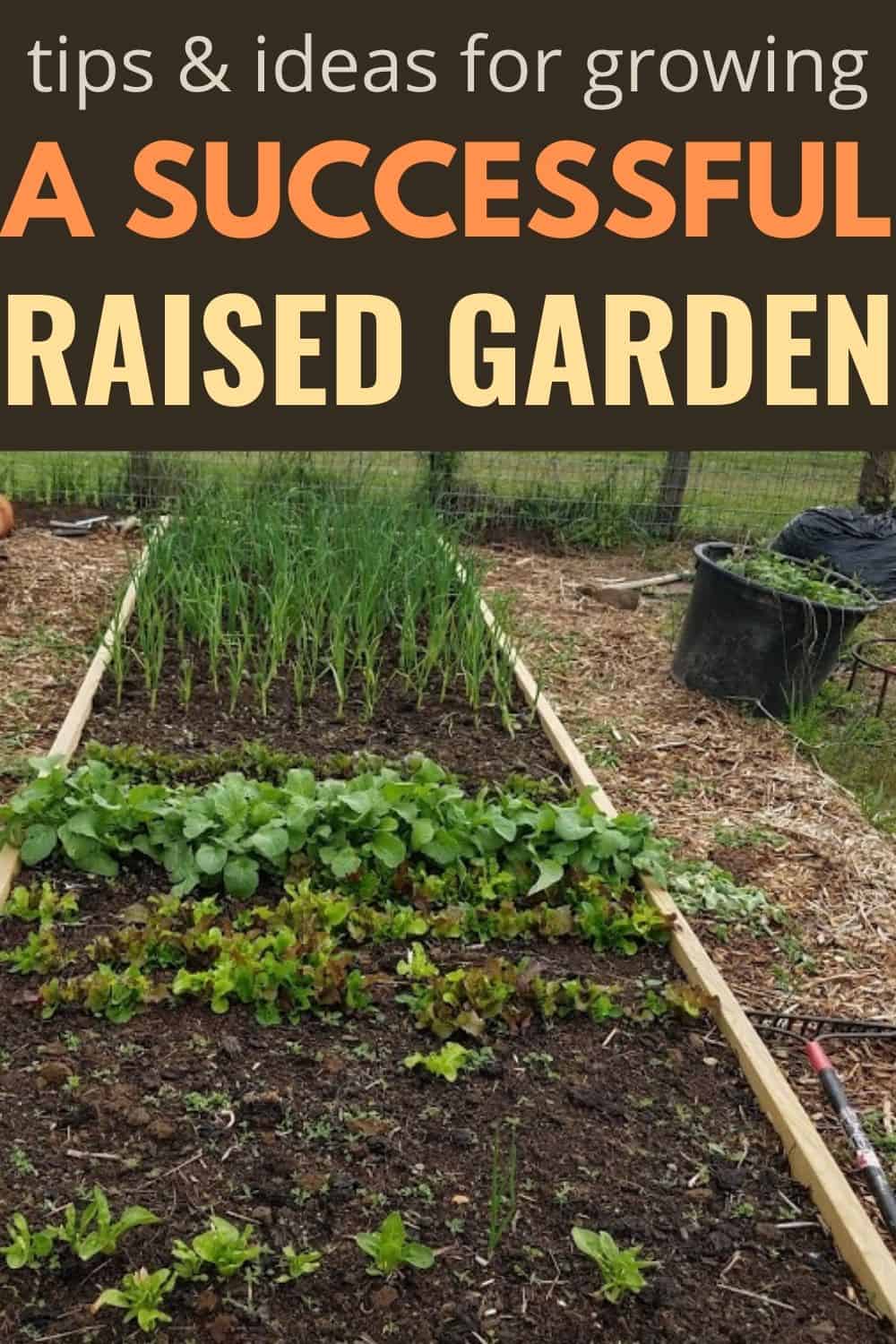


11 Innovative Vertical Garden Ideas For Small (and Large) Spaces
Tuesday 14th of February 2023
[…] you have to work with, which can be especially helpful in small spaces such as patio gardens or raised bed gardens. Whether you need more room to grow or simply want to add vertical interest to your garden, here […]
Backyard Vegetable Garden Ideas
Wednesday 17th of August 2022
[…] What Is A Raised Bed Garden? Tips & Ideas For Growing A Successful Raised Garden […]
6 Landscaping Ideas Around Septic Tank Areas
Saturday 16th of April 2022
[…] vegetable gardens require frequent maintenance that could damage a septic system, and raised bed gardens can reduce evaporation, which is important for the septic system to work properly. Locate vegetable […]
Landscaping Under Black Walnut Trees: 64 Pretty Flowers And Other Plants That Will Grow
Monday 7th of March 2022
[…] Raised bed gardens can be built in almost any shape and with a wide range of materials, so you don’t need to feel boxed in by this idea. They also offer myriad benefits, including improved drainage, warmer soil for earlier planting, fewer weeds, and easier access. […]
Occultation In Gardening: No-Till Bed Preparation In 4 Easy Steps
Friday 18th of February 2022
[…] use, called occultation, requires just four easy steps and very little effort. It’s great for raised bed gardens, small-scale vegetable farms, and everything in […]